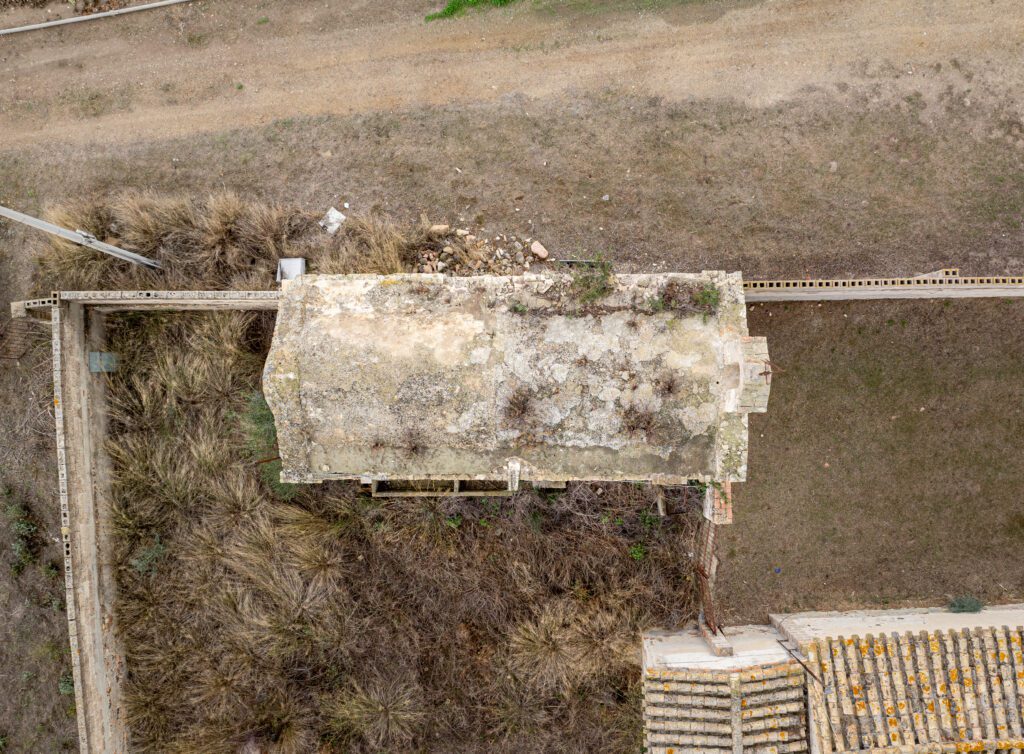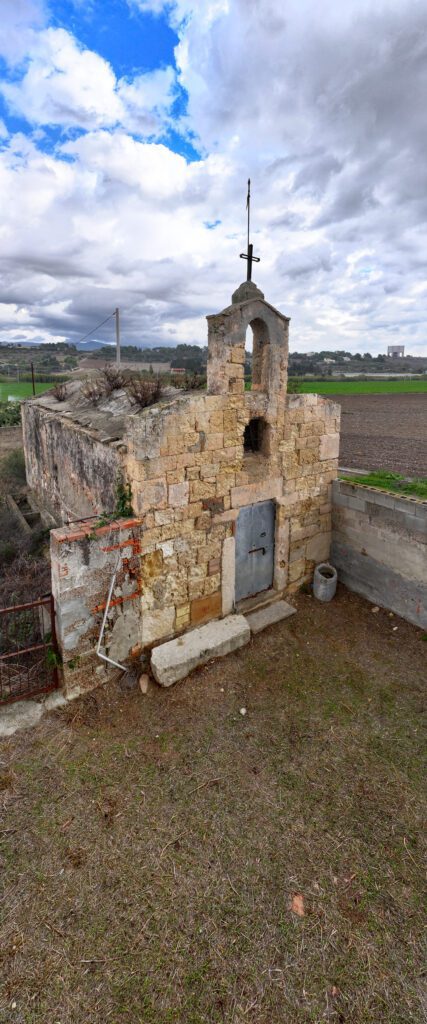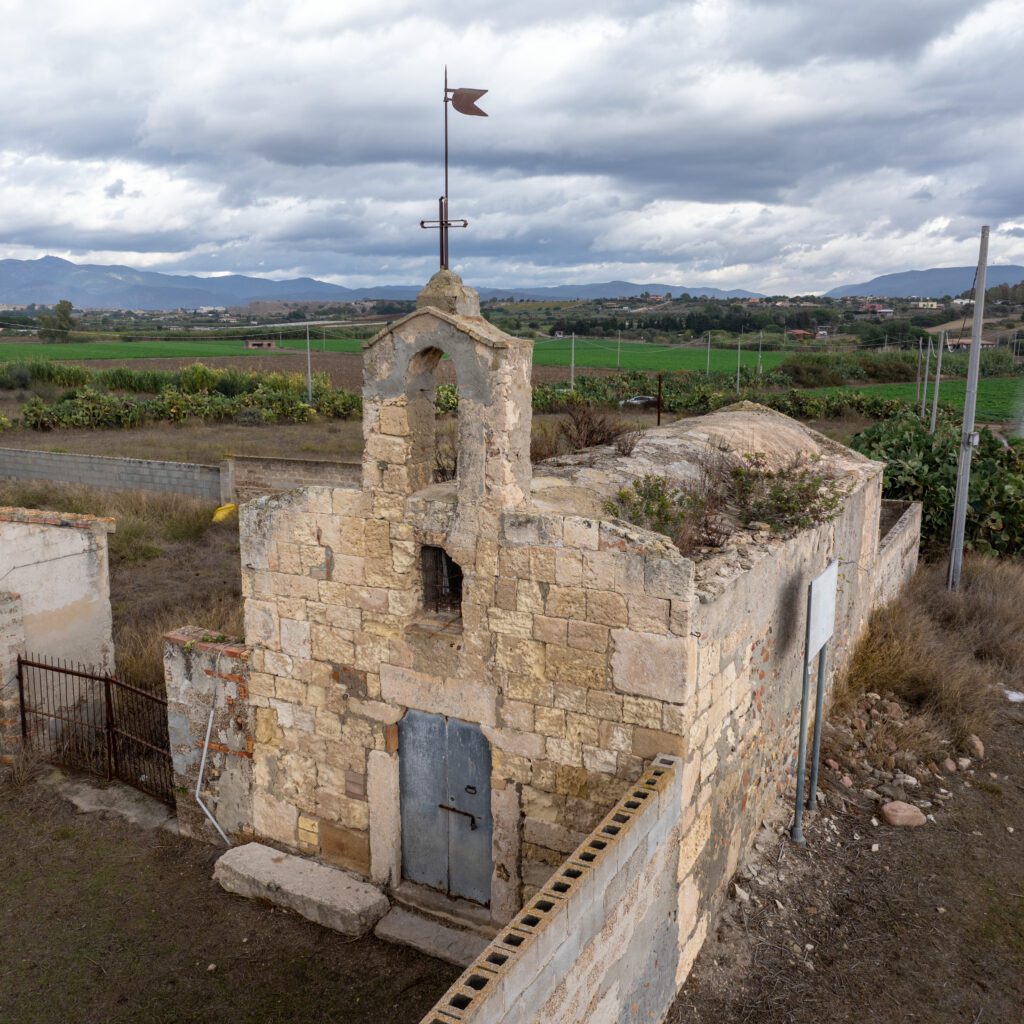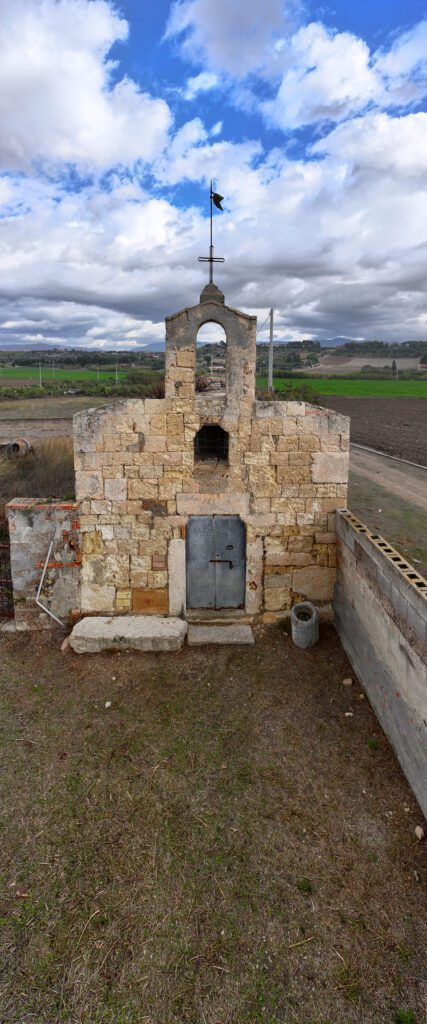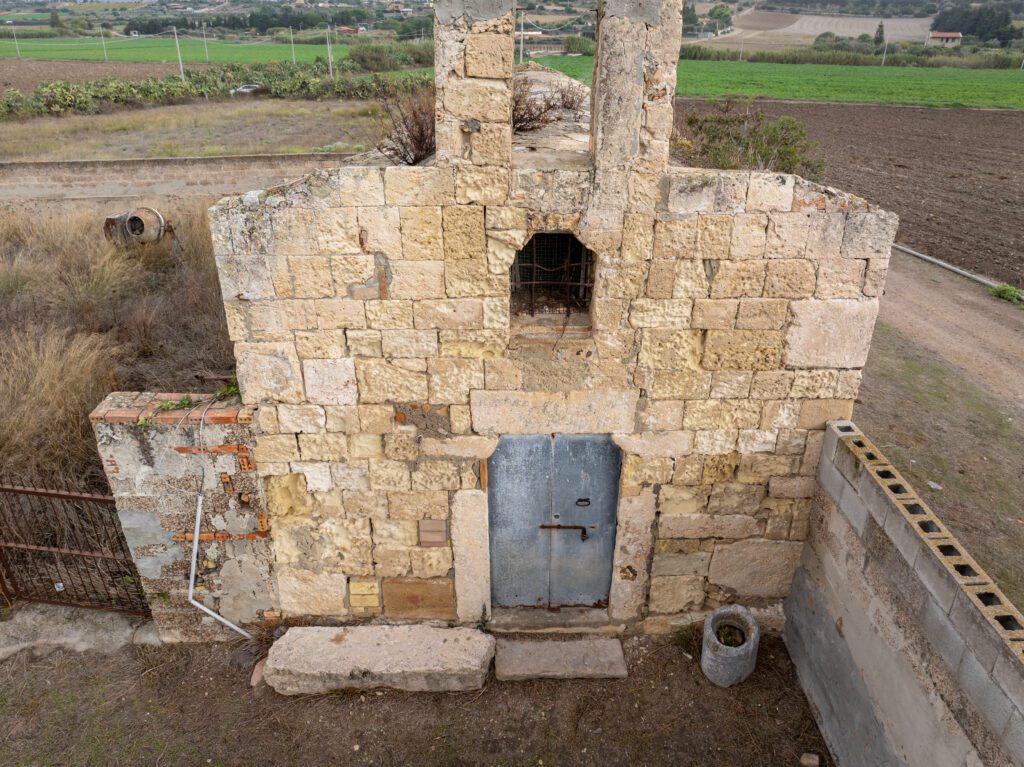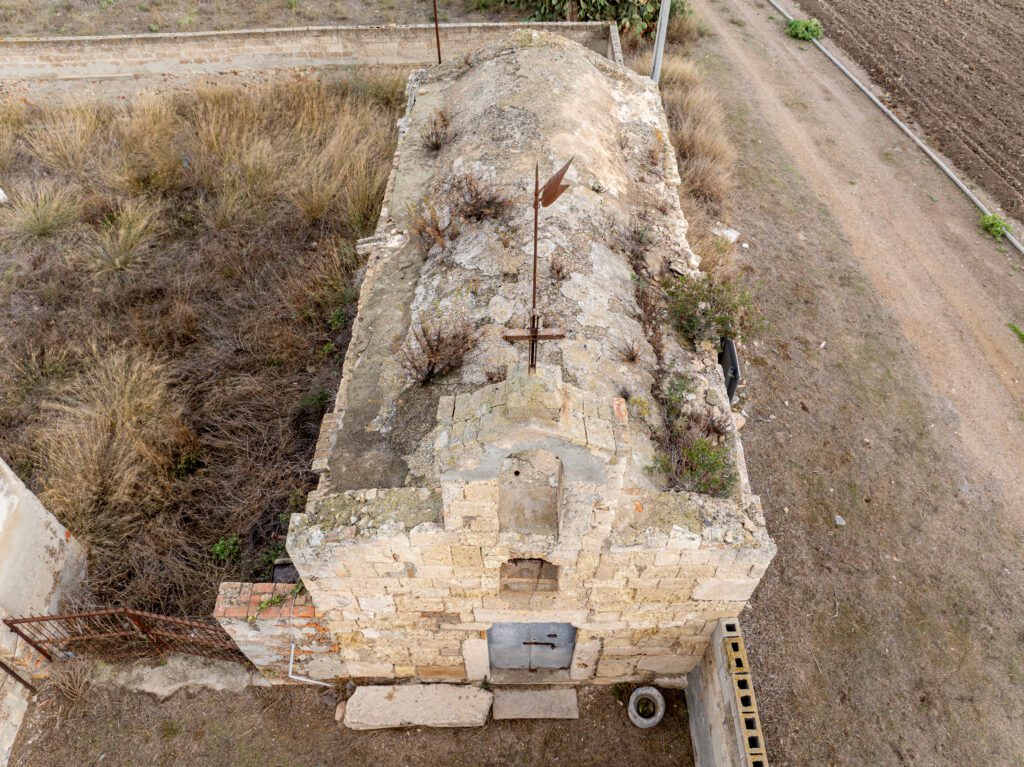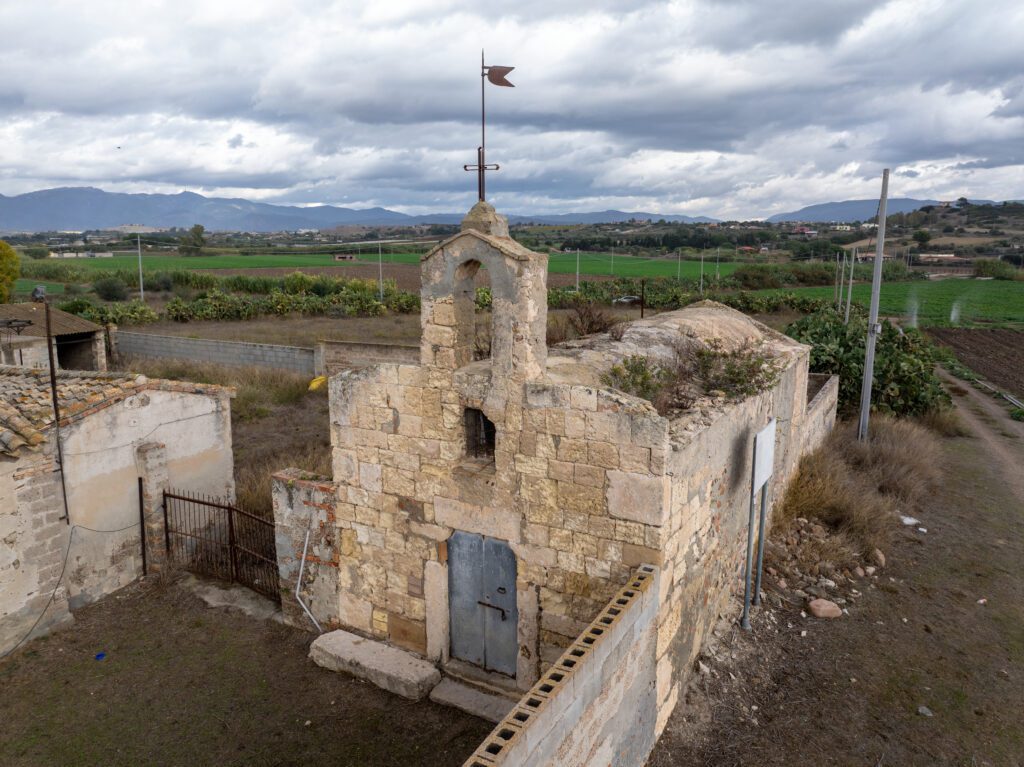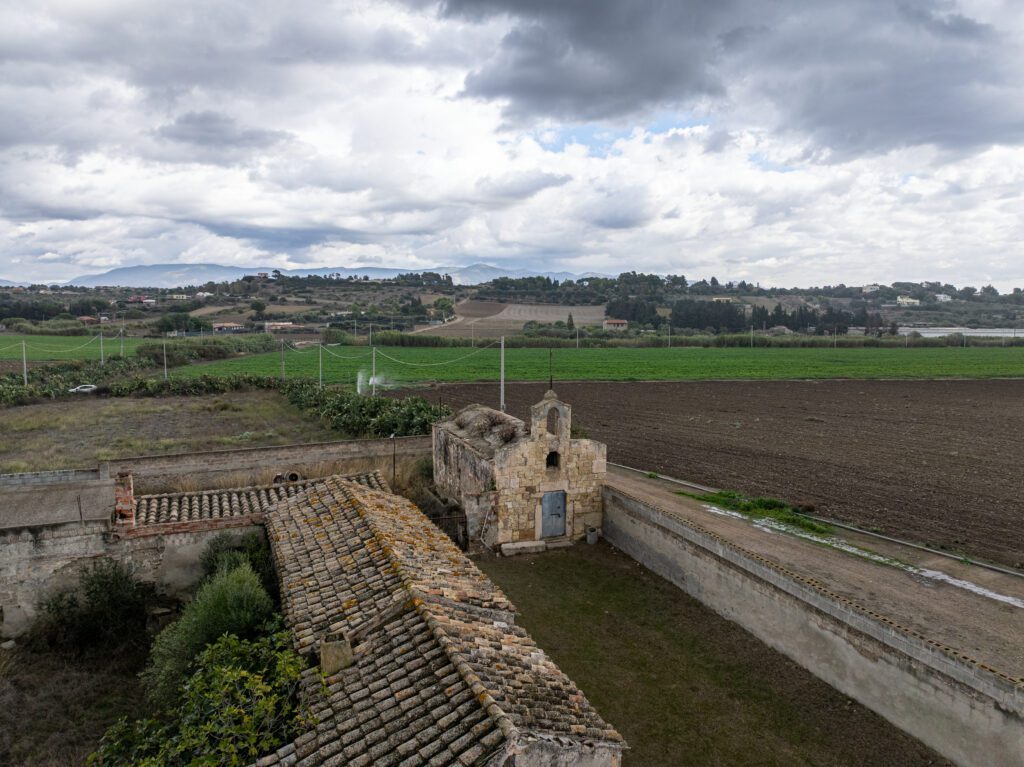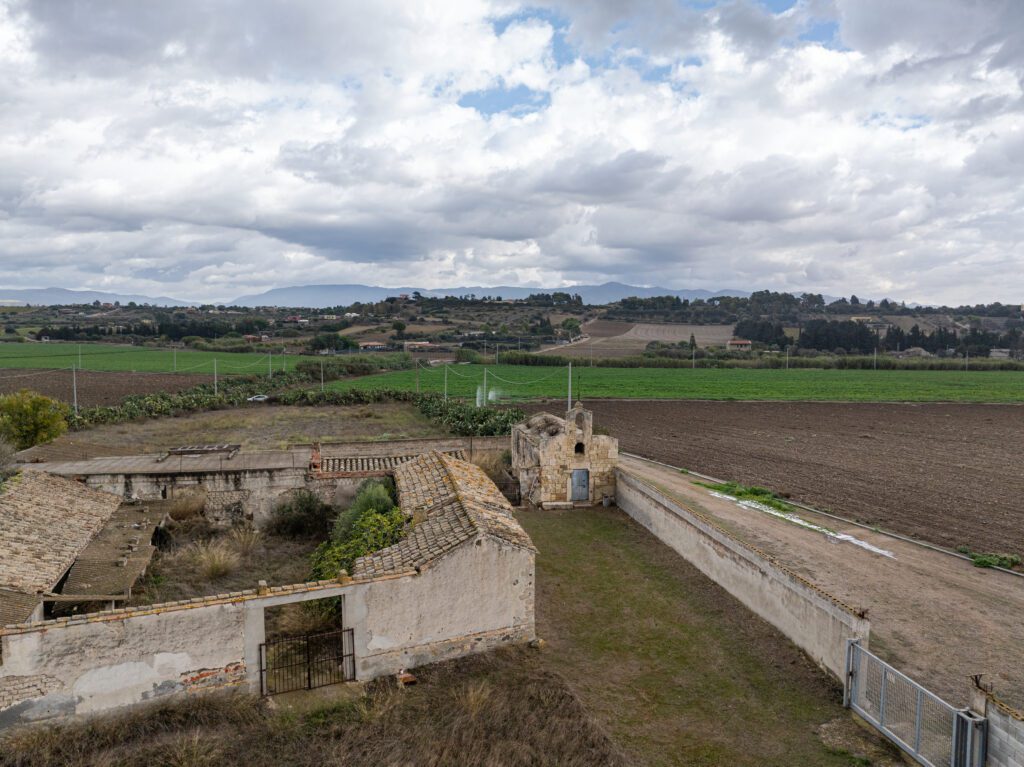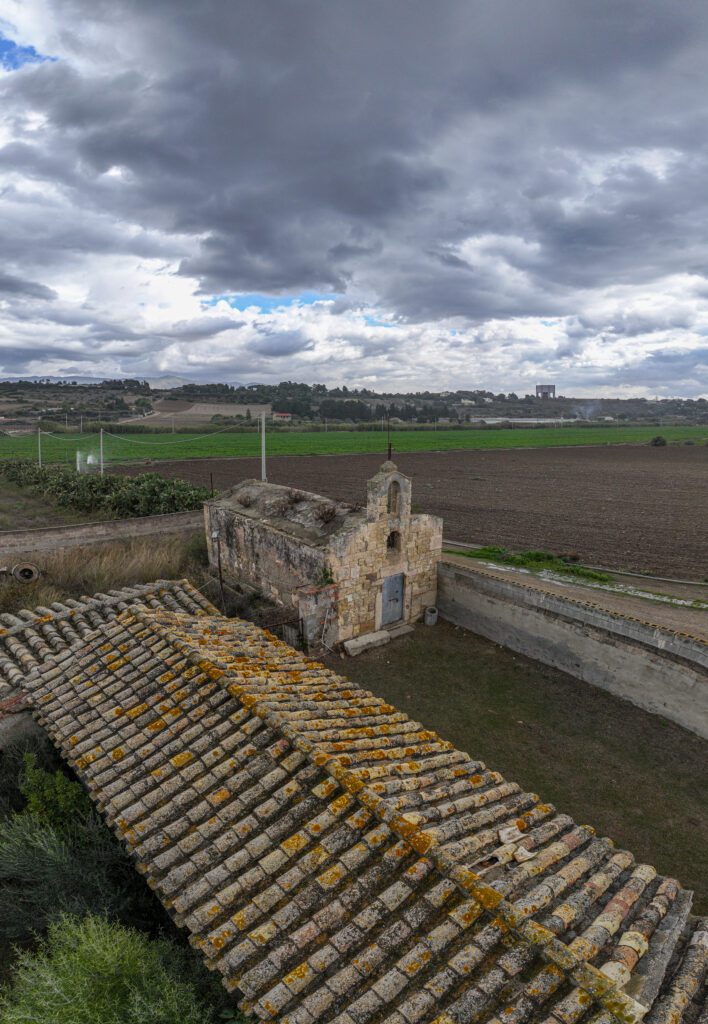San Forzorio
CHIESA DI San Forzorio
The Church of San Forzorio, built at the end of the 13th century near the homonymous pond on a farm, preserves the original layout with clear late Romanesque elements characterised by great simplicity. The original building is probably the work of local craftsmen who used spoil found in situ, the presence of which is revealed by the discovery of Roman tombs.
The façade, made of medium and large limestone ashlars with its ribbed bell tower and a single round-arched window, has elements similar to those of the Church of San Platano.
Inside, the church has a single nave ending in a semicircular apse to the east. The barrel-vaulted ceiling is painted with a blue colour scheme and golden stars, while the apse area features a decoration with geometric bands, probably dating back to the 19th century. The only furnishings present are a masonry altar and, inside a 20th-century-style wood and glass shrine, the wooden simulacrum of a young saint with the palm of martyrdom and a book.

 ►
Explore 3D Space
►
Explore 3D Space

